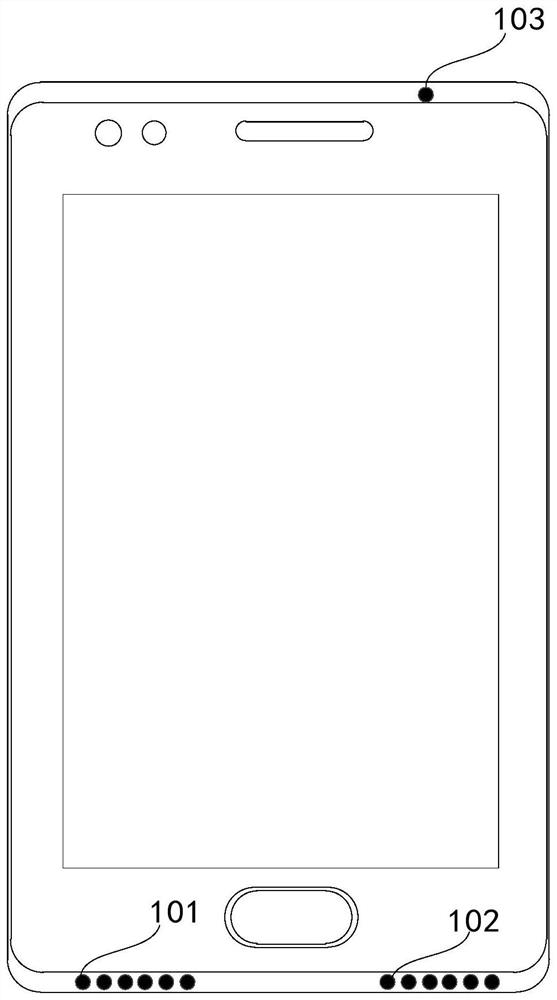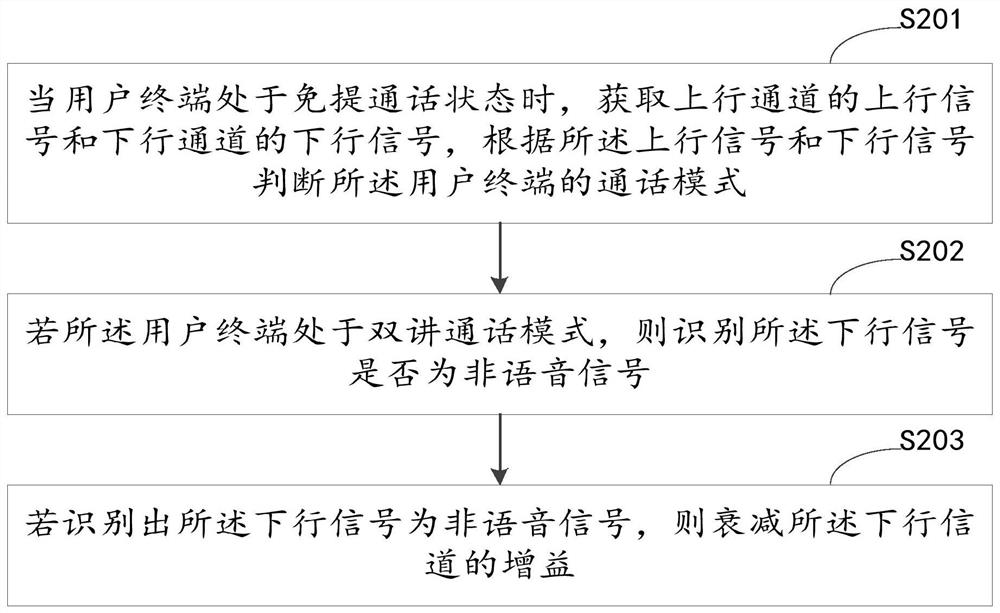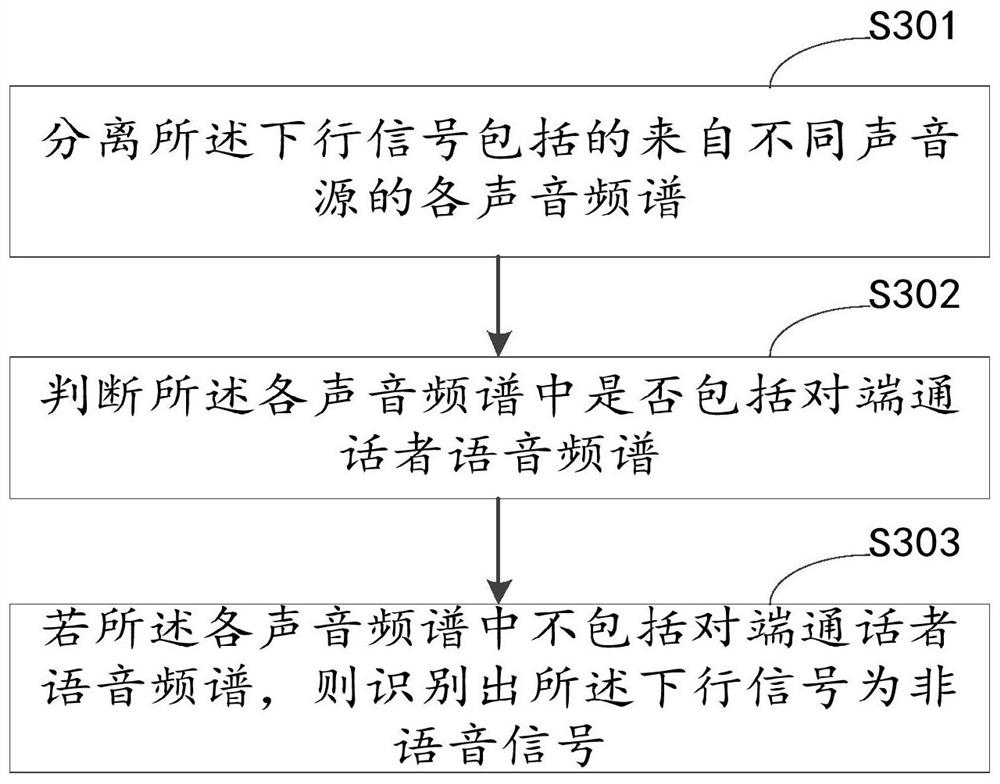Method, device, terminal and computer-readable storage medium for improving call quality
A technology of call quality and hands-free call, which is applied in telephone communication, two-way sound reinforcement telephone system, branch office equipment, etc. It can solve the problems of voice signal damage, signal distortion, and voice signal impact, so as to improve call quality and suppress echo , improve the effect of sound quality
- Summary
- Abstract
- Description
- Claims
- Application Information
AI Technical Summary
Problems solved by technology
Method used
Image
Examples
Embodiment 1
[0028] figure 2 It shows an implementation flowchart of a method for improving call quality provided by an embodiment of the present invention, the method is applied to a user terminal, and includes steps S201 to S203.
[0029] In S201, when the user terminal is in a hands-free call state, acquire an uplink signal of an uplink channel and a downlink signal of a downlink channel, and judge a call mode of the user terminal according to the uplink signal and the downlink signal.
[0030] When the user terminal is in the hands-free call state, obtaining the uplink signal of the uplink channel and the downlink signal of the downlink channel refers to acquiring the uplink signal of the caller at one end and the downlink signal of the downlink channel; in the embodiment of the present invention, to obtain the The uplink signal of the uplink channel and the downlink signal of the downlink channel of the caller at the end are taken as an example for description.
[0031] Wherein, the...
Embodiment 2
[0041] This embodiment is a further limitation on identifying whether the downlink signal is a non-speech signal in S202 of the first embodiment.
[0042] In this embodiment, the non-speech signal refers to the downlink signal not including the speech signal of the caller at the opposite end. For example, when the caller at the opposite end is not speaking, the caller at the local end still receives the voice signal transmitted from the caller at the opposite end, then the voice signal is a non-voice signal. Voice signals of humans, voice signals of animals, and voice signals of equipment such as TVs, etc.
[0043] like image 3 As shown, the identifying whether the downlink signal is a non-speech signal includes: step S301 to step S303.
[0044] In S301, separate sound spectra from different sound sources included in the downlink signal.
[0045] The sound spectrum is a physical parameter for distinguishing different sound sources, which can be displayed using electrical i...
Embodiment 3
[0058] This embodiment is a further limitation on identifying whether the downlink signal is a non-speech signal in S202 of the first embodiment.
[0059] like Figure 4 As shown, the identifying whether the downlink signal is a non-speech signal includes: step S401 to step S404.
[0060] In S401, separate sound spectra from different sound sources included in the downlink signal.
[0061] It should be noted that the implementation manner of S401 is the same as that of S301 in the second embodiment, and details are not repeated here.
[0062] In S402, it is judged whether the sound spectrums include human voice spectrums.
[0063] Since the human voice spectrum is more periodic than machine noise, it can be very easily determined whether the human voice spectrum is included in the various sound spectrums.
[0064] In S403, if the sound spectrums do not include the human speech spectrum, identify the downlink signal as a non-speech signal.
[0065] Since the non-speech sign...
PUM
 Login to View More
Login to View More Abstract
Description
Claims
Application Information
 Login to View More
Login to View More - R&D
- Intellectual Property
- Life Sciences
- Materials
- Tech Scout
- Unparalleled Data Quality
- Higher Quality Content
- 60% Fewer Hallucinations
Browse by: Latest US Patents, China's latest patents, Technical Efficacy Thesaurus, Application Domain, Technology Topic, Popular Technical Reports.
© 2025 PatSnap. All rights reserved.Legal|Privacy policy|Modern Slavery Act Transparency Statement|Sitemap|About US| Contact US: help@patsnap.com



